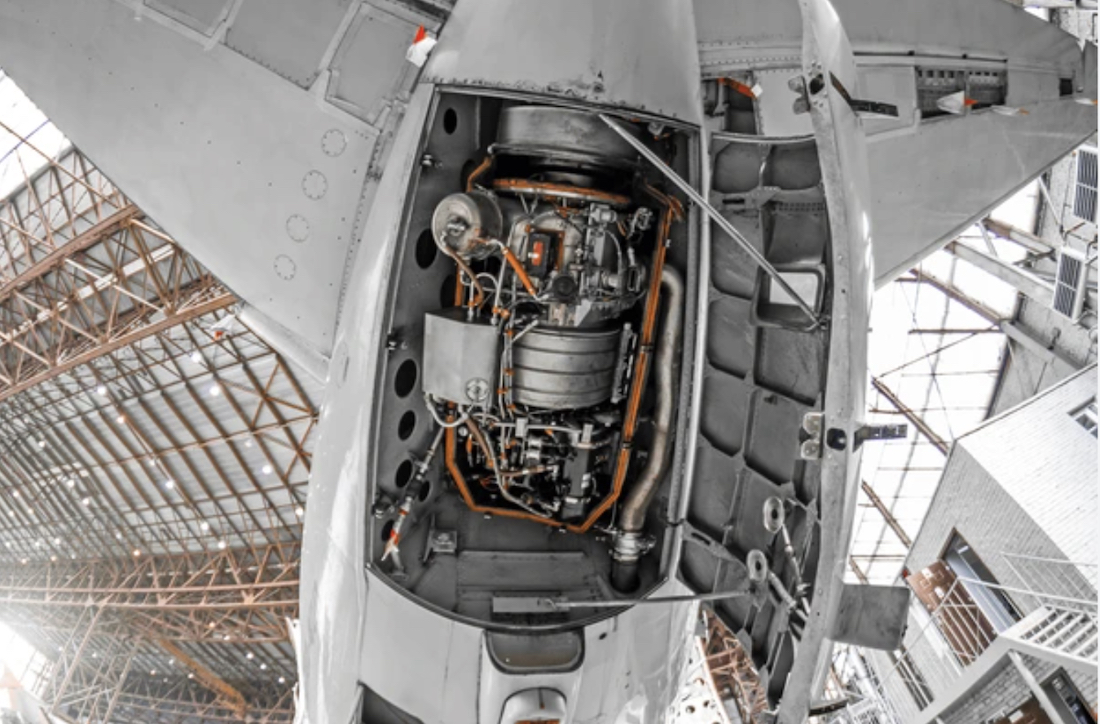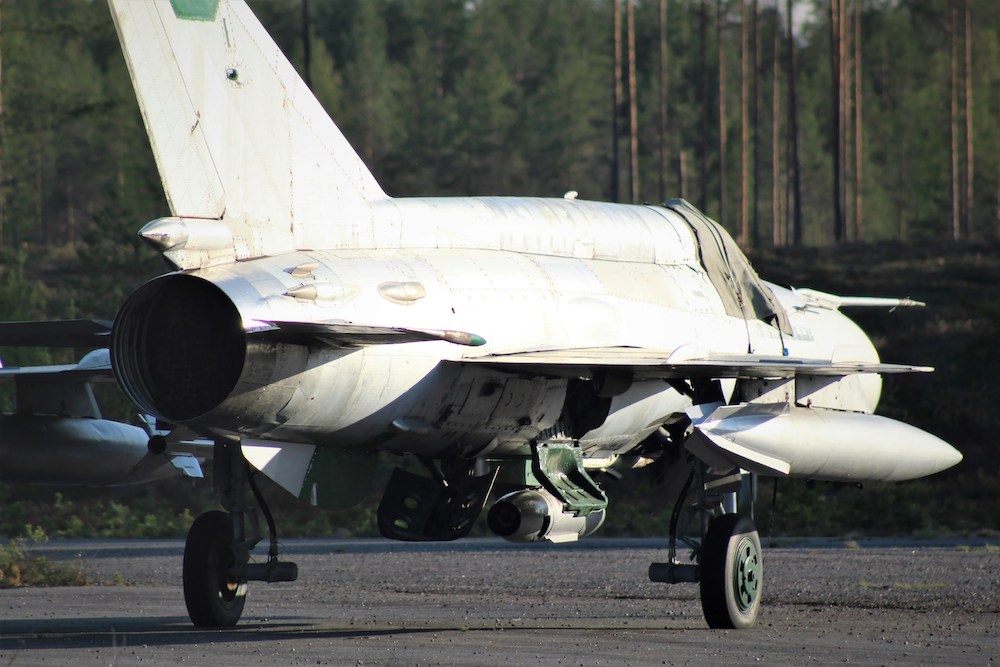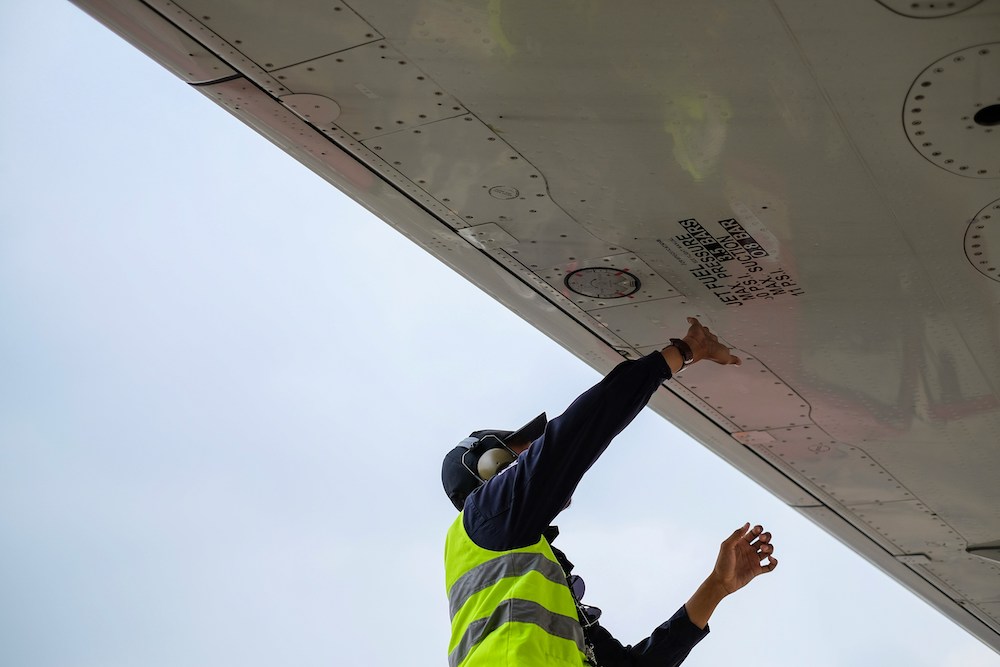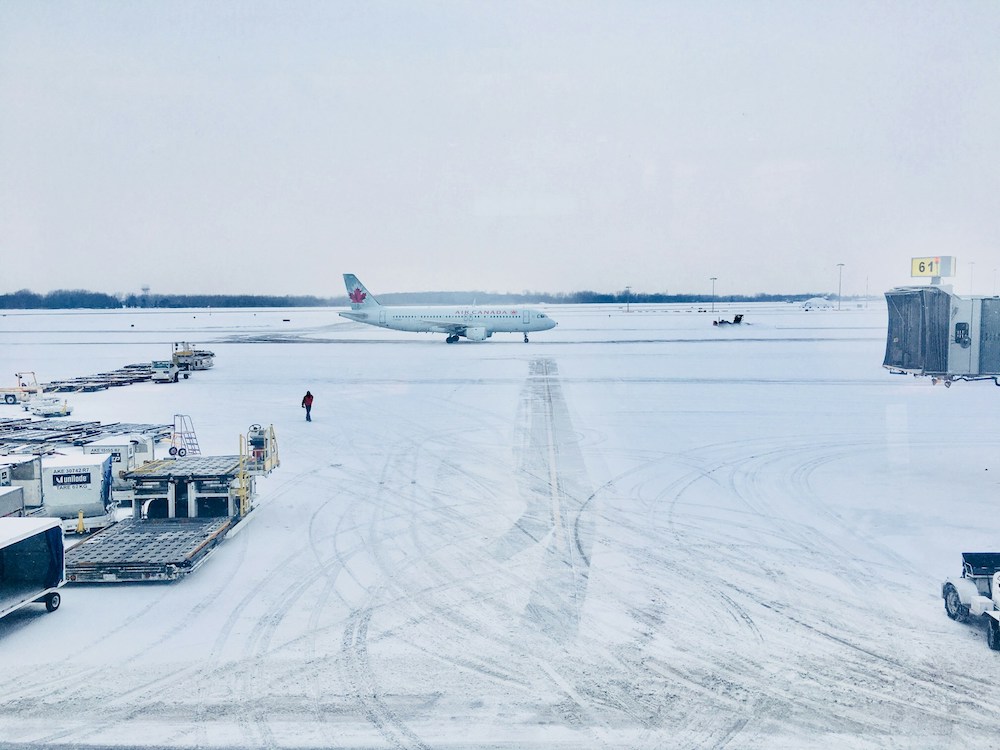
In the sprawling world of aviation, there are many components and systems that contribute to the safety and efficiency of an aircraft. The Auxiliary Power Unit (APU) plays a critical role in enhancing aviation safety and efficiency by providing essential power and enabling various functions both on the ground and in the air during normal and non-normal operations. Let’s explore how.
History of the APU
The history of the APU dates to the World Wars, as the unit was initially utilized in military airships and aircraft to:
- Power various types of support equipment
- Start engines
- Provide backup power in case of non-normal operations
Over time, the use of the APU expanded into the civilian sector.
Initially, commercial aircraft could only rely on external power sources to provide electrical power during ground operations. However, when modern jets entered the market, the need for a more self-reliant and efficient power source arose. The first integrated APUs were introduced on commercial aircraft by various aircraft manufacturers between the late 1940s and early 1960s (e.g., Boeing 727).
As aviation travel continued to grow and operations expanded to smaller airports with reduced ground handling capabilities, the need for self-sufficiency grew further. With time, in addition to being another power source on an aircraft, the APU became a reliable source for the operation of other systems, as well as a reliable backup in case of non-normal operations, providing the necessary redundancy and reliability.
What is an APU?
An APU is a small, self-contained gas turbine engine, which is normally located in the tail cone of the aircraft in a fireproof, sound-reducing compartment (see Figure 1). The positioning of the APU at the rear of an aircraft allows for efficient exhaust and minimizes the impact of noise and vibration on the cabin and flight deck areas.
Figure 1. Example of Boeing 737 APU location. CREDITS: Boeing 737 Aircraft Systems Manual
The APU allows an aircraft to operate independently and has several normal and non-normal purposes, which include:
- Providing electrical power to all aircraft systems when the aircraft’s main engines are not in operation (e.g., ground operations)
- Providing bleed air for heating, cooling, engine starting, etc.
- Reducing fuel consumption by avoiding the need to start the aircraft’s main engines while at the gate
- Saving on maintenance costs by reducing the wear and tear on the main engines
- Providing electrical power and/or bleed air in case of system failure while airborne (e.g., engine failure)
- Optimizing the engines’ performance on takeoff by providing air conditioning and pressurization
The APU has its own electronic control unit, which monitors the efficiency of the APU by observing the start sequence, turbine speed, exhaust temperature, oil and fuel supply, and bleed air outlet. In case of a failure, the electronic control unit ensures an automatic shutdown of the APU to prevent any further damage.
The APU also has its own fire detection and extinguishing system, which allows for the automatic shutdown of the unit and the activation of an internal fire extinguisher, reducing the risk of damage due to a fire.
Although APUs may vary depending on the manufacturers’ designs, the overall operation, inner workings, and purpose of the units remain similar (see Figure 2).
Figure 2. Example of Boeing 737 APU inner workings. CREDITS: The Boeing 737 Technical Channel
Normal Operations of the APU
To start the APU, a checklist or supplemental procedure is generally followed to ensure an appropriate start sequence. APU life can be shortened by incorrect operating techniques. This can be avoided by allowing the correct warm-up time, cool-down time, and bleed air configuration for each APU type.
The APU is small enough to be started electrically and works like any jet engine (i.e., suck, squeeze, bang, blow):
- Air is drawn into the unit
- The air is compressed
- The compressed air is mixed with fuel and ignited
- The hot gases expand and exit the unit
The power from the battery or an electric ground power cart is used to spin up the APU by its electric starter motor, and then introduce fuel into it once its spinning fast enough. Once started, the APU powers the following:
- Electrical generator
- Air compressor
The generator powers cabin lights and flight deck avionics. Bleed air from the compressor powers air conditioning packs, providing either hot or cold air, and most importantly, providing the needed compressed air to get the engines started.
Electrical Power from APU
Once the APU is running, one of its primary purposes is to provide electrical power to the aircraft and its components. The electrical system is a self-contained network of components that generate, transmit, distribute, utilize, and store electrical energy.
All aircraft electrical systems have components with the ability to generate electricity. The electrical generator output is normally 115-120V/400HZ AC, 28V DC, or 14V DC. Power from the electrical generator may be used without modification or it may be routed through transformers, rectifiers, or inverters to change the voltage or type of current.
The electrical generator output is normally directed to one or more distribution buses. Individual components are powered from the buses with circuit protection in the form of circuit breakers or fuses incorporated into the wiring.
The electrical generator output is also used to charge the aircraft battery, which is used for both aircraft startup and as a backup power source in the event of a generation or distribution system failure.
Bleed Air from APU
Another major purpose of the APU is to provide bleed air to various aircraft systems. Bleed air is compressed air, which is taken from within the APU and, due to its high temperature and moderate pressure, is used by other aircraft systems for certain functions. The point at which the air is bled from the APU varies by APU type but is always tapped from the compressor before it enters the combustor phase.
The hot, compressed air may be used in many ways, including:
- Engine starting
- Air conditioning and pressurization
- Engine and airframe de/anti-icing
- Water reservoir pressurization
- Hydraulic reservoir and pneumatically powered actuator pressurization
Non-normal Operations of the APU
When the APU is certified for use in-flight, the APU can be used, as required, to provide an additional source of electrical power in the event of the loss of an engine generator. It can also be used as a source of bleed air for starter assist for an in-flight engine relight or to power the air conditioning packs in the event conditions dictate the takeoff be conducted with the engine bleed air turned off.
The APU can also be left on or started in-flight to assist with various non-normal operations where bleed air or electrical generation may be needed. Each APU has a different flight envelope in which it can be started and used, which is specified in the aircraft’s operating limitations.
APU’s Electronic Control Unit
An electronic control unit monitors and controls the APU. If the electronic control unit detects a fault that may cause damage to the APU or the aircraft, it automatically executes a protective shutdown. Automatic shutdown protection is usually available for the following conditions:
- Overspeed
- Low oil pressure
- High oil temperature
- APU fire
- Fuel control unit failure
- Exhaust gas temperature exceedance
- Other system faults
APU’s Fire Detection and Extinguishing System
A single fire detection loop is installed on most APU designs. As the temperature of the detector increases to a predetermined limit, the detector senses a fire condition. There are several visual and aural indications of an APU fire, including fire warning bells and lights, to alert the crew of the fire.
The APU fire extinguishing system generally consists of one APU fire extinguisher bottle that can be discharged from the flight deck. On more complex aircraft, a secondary APU fire control panel is sometimes located below the wing to allow for the extinguishing of an APU fire from the ground level.
Limitations
Every major aircraft system comes with limitations that must be understood and followed. APUs typically have several limiting altitudes below the aircraft ceiling, including:
- Maximum altitude to operate the APU
- Maximum altitude to start the APU
- Maximum altitude to use the APU electrical generator, bleed air compressor, or both
APUs also come with their own set of starting limitations, with maximum peak temperature during start and starter cooling times following an unsuccessful start.
The Importance of Redundancy to Ensure Safety
Risk is a constant in the aviation industry. With complex machinery, human interfaces, and organizational considerations, there are hazards around every corner. Therefore, at the core of the industry is the shared goal of safety.
In an environment where things could go wrong around every corner, redundancy is an essential component to ensure the safety and efficiency of operations. Many aircraft systems are already designed in such a way that if one part of the system fails, the system can still be able to function due to the presence of backup components or the presence of other equivalent systems (i.e., what the APU is to the engines).
As we move into the world of next-generation technologies, system redundancy must continue to be a priority for the industry to maintain the highest level of safety.
Examples of Auxiliary Power Units and Related Parts Found on ePlane
By Katarzyna Szwed-Carlson
Kasia Szwed-Carlson is an expert in the aviation industry with 15 years of experience working in flight operations management and training leadership roles.



